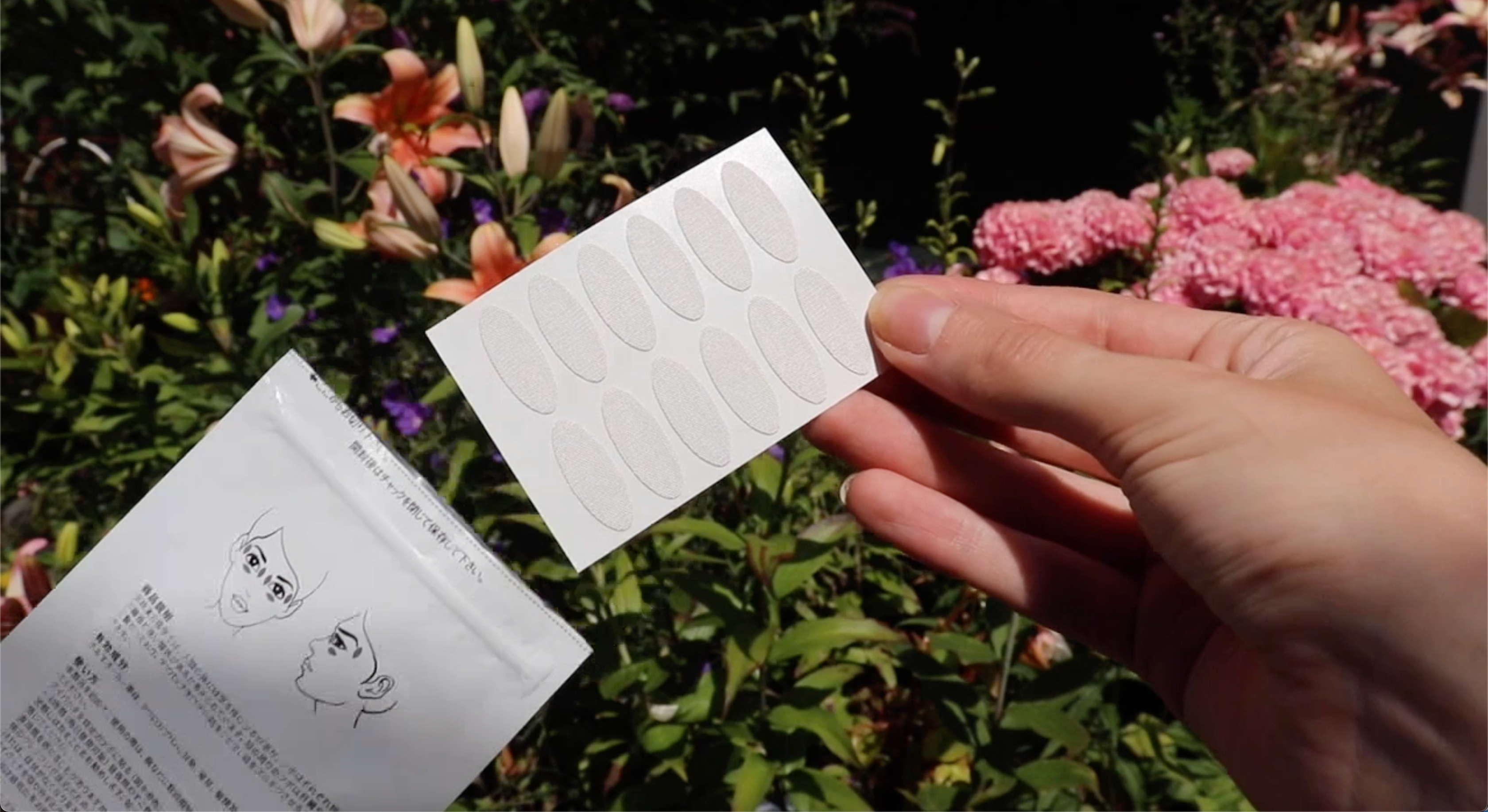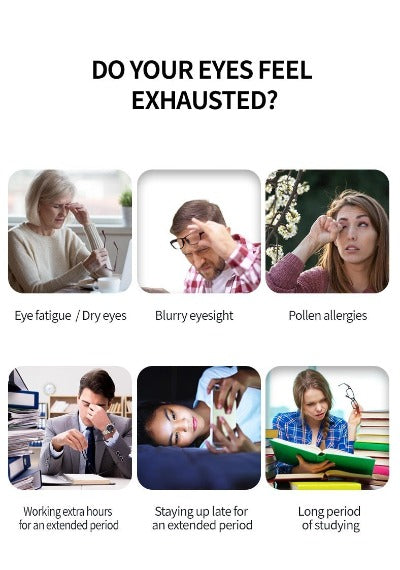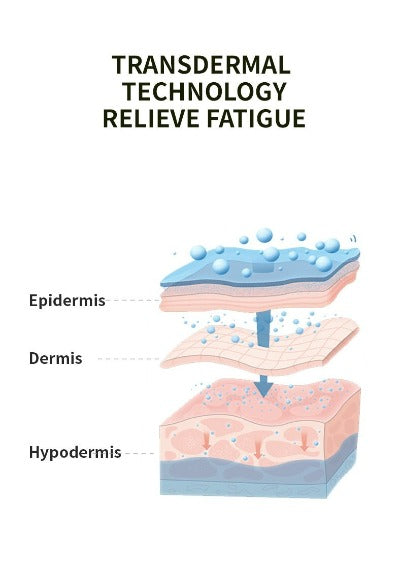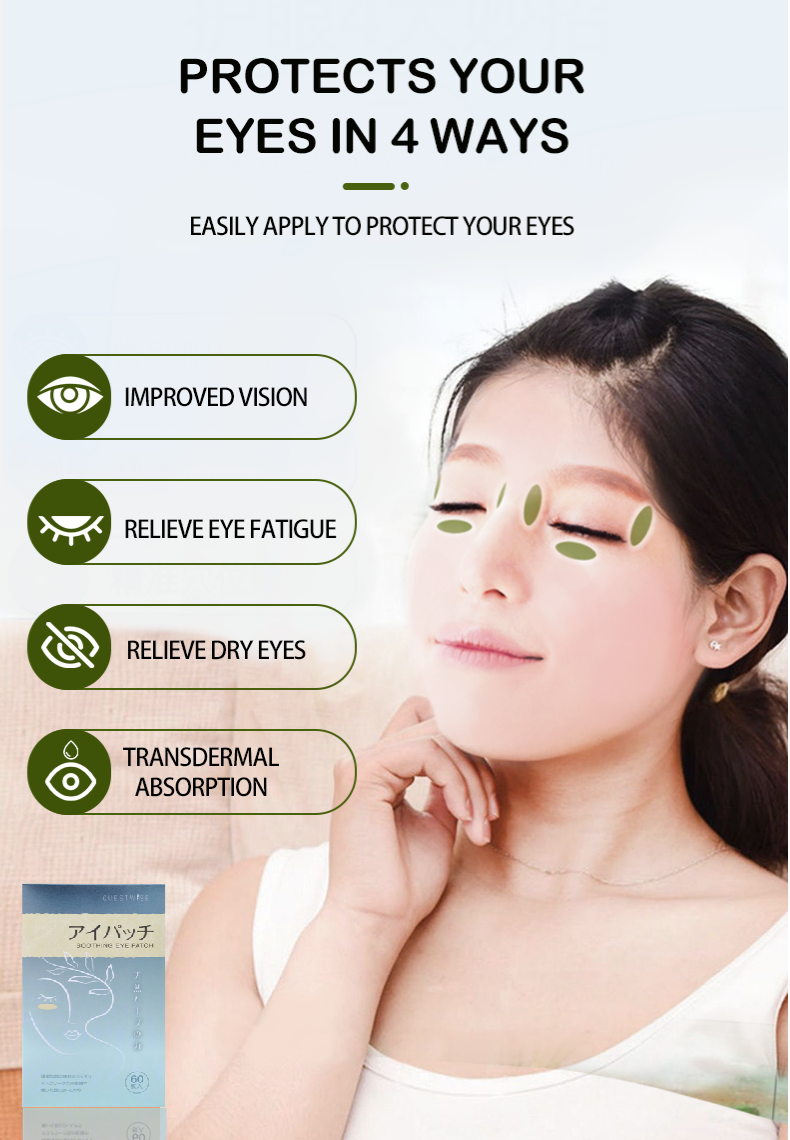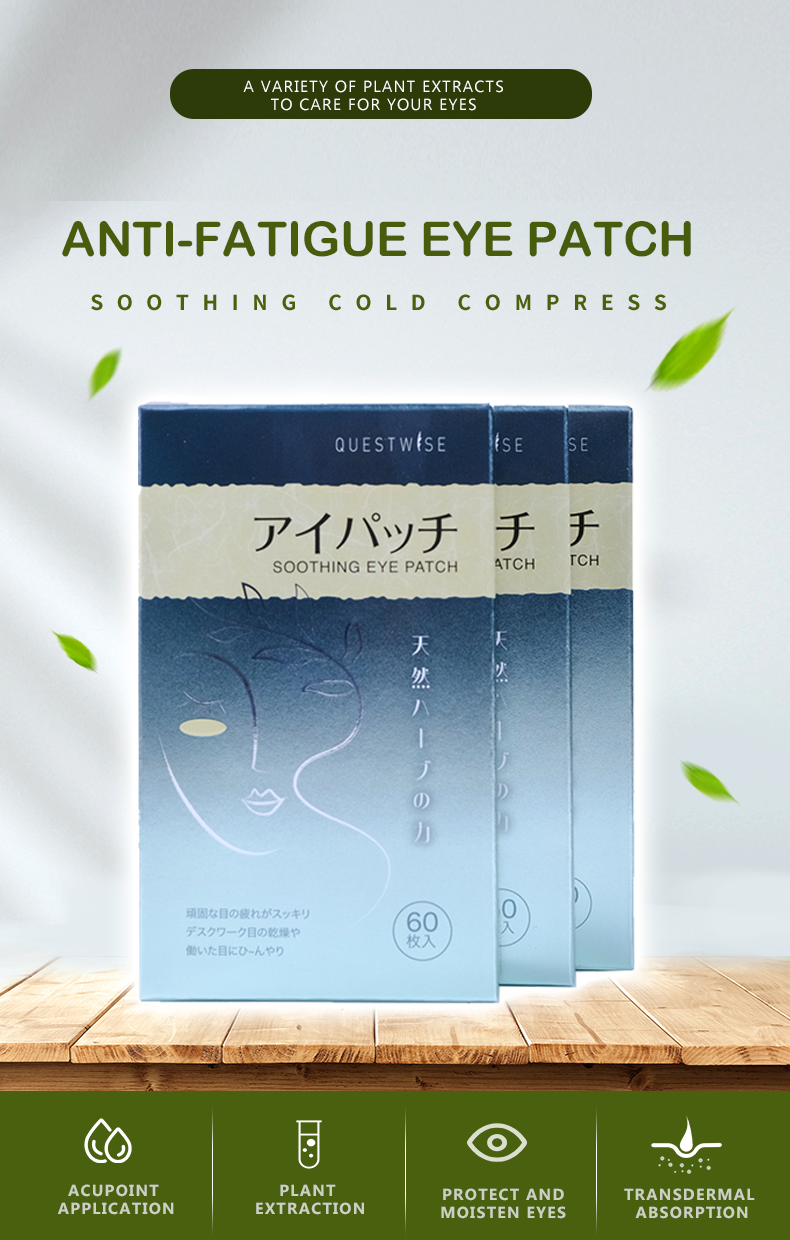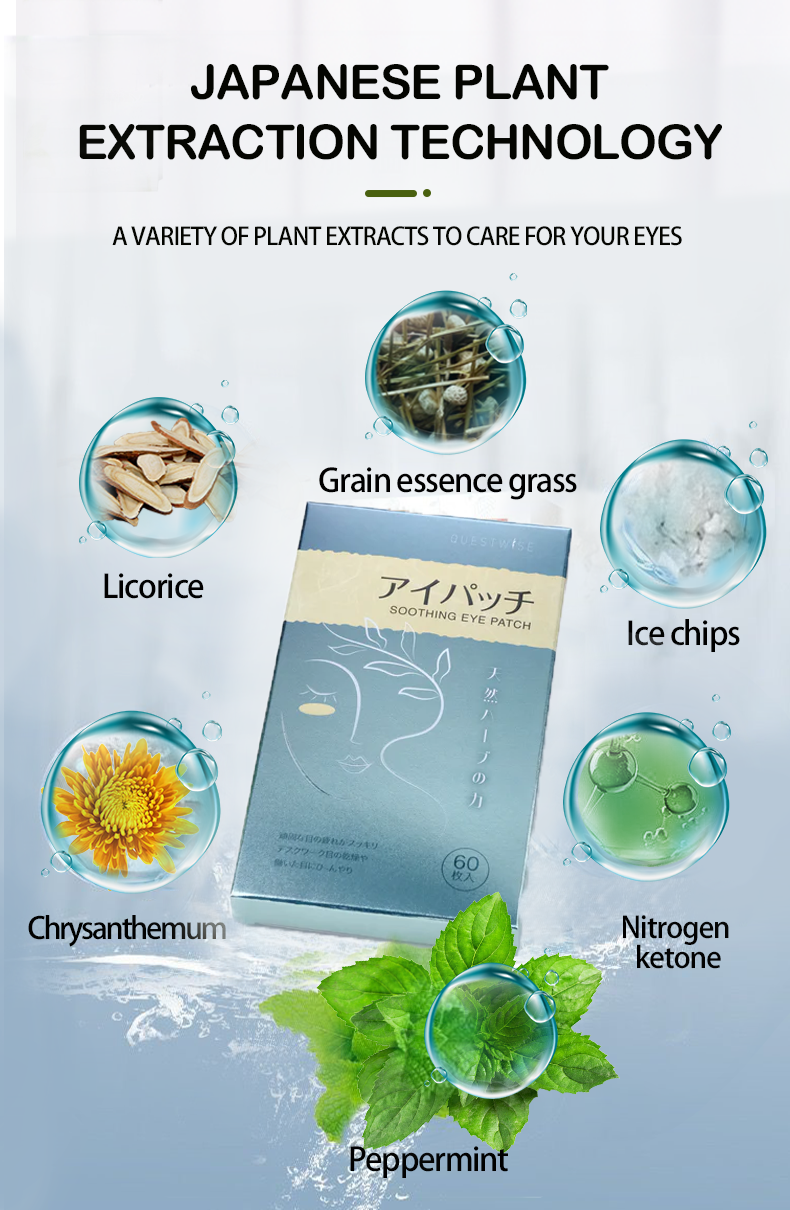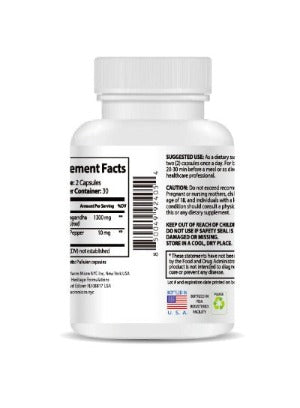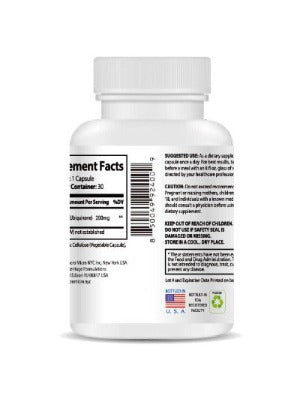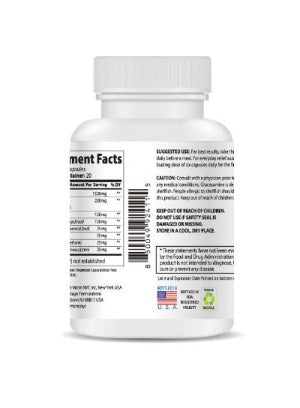Can Dry Eye Syndrome Affect Your Vision Long-Term? A Comprehensive Guide
Dry eye syndrome, a prevalent condition affecting millions worldwide, occurs when your eyes don't produce enough tears or when your tears evaporate too quickly. This seemingly simple discomfort can, if left unaddressed, have significant consequences for your vision. This comprehensive guide delves into the potential long-term effects of dry eye syndrome, explores the various factors contributing to its development, and outlines effective strategies for mitigation, including the use of therapeutic eye patches like the Wise Quest Soothing Eye Patches - 3-Month Wellness Pack.
Understanding the Complexity of Dry Eye Syndrome
The tear film, a crucial component of eye health, is a complex mixture of water, oil, and mucus. It's responsible for lubricating, nourishing, and protecting the surface of your eye. Dry eye syndrome arises when this delicate balance is disrupted, resulting in insufficient tear production (aqueous deficient dry eye), excessive tear evaporation (evaporative dry eye), or a combination of both. This disruption triggers a cascade of events that can negatively impact the structure and function of your eyes.
The causes of dry eye syndrome are multifaceted. Age is a significant factor, as tear production naturally declines with age. Hormonal fluctuations, particularly in women, can also play a role. Certain medications, such as antihistamines, antidepressants, and some oral contraceptives, are known to contribute to dry eye symptoms. Environmental factors, including dry air, wind, and exposure to air conditioning, can also exacerbate the condition. Prolonged screen time, a common aspect of modern life, is another significant culprit, as it reduces blink rate and increases tear evaporation.
The Long-Term Impact on Vision: A Deeper Dive
While the immediate symptoms of dry eye syndrome, such as burning, itching, and stinging sensations, are uncomfortable, the long-term consequences are far more concerning. Persistent dryness can inflict irreversible damage on the eye's delicate structures, potentially leading to significant vision problems. Let's examine the potential long-term effects in detail:
- Corneal Damage: The cornea, the transparent front part of the eye responsible for focusing light, is extremely sensitive to dryness. Chronic dryness can cause corneal erosion, the wearing away of the cornea's surface. This erosion can lead to significant discomfort, blurry vision, and increased susceptibility to infections. Persistent dryness can also result in keratitis (corneal inflammation) and even the formation of corneal ulcers. These severe complications can cause permanent scarring and visual impairment if left untreated.
- Reduced Visual Acuity: Dry eyes can interfere with the clarity of vision. The dryness and irritation can distort the image projected onto the retina, resulting in blurred or fluctuating vision, especially at night or in bright light. This blurry vision can significantly impact daily activities, from driving to reading.
- Increased Risk of Eye Infections: The tear film serves as a natural protective barrier against bacteria and other pathogens. With dry eye syndrome, this barrier is compromised, leaving the eye more vulnerable to infections. Conjunctivitis (inflammation of the conjunctiva) and blepharitis (inflammation of the eyelids) are common complications. These infections can further damage the cornea and other eye structures, potentially leading to permanent vision loss.
- Meibomian Gland Dysfunction (MGD): The meibomian glands, located within the eyelids, produce oils that help maintain the stability of the tear film. Meibomian gland dysfunction (MGD), a common accompaniment to dry eye syndrome, can lead to increased tear evaporation and further exacerbate the condition. This can contribute to the long-term damage described above.
- Dry Eye-Related Vision Disorders: In some cases, severe and long-standing dry eye can contribute to the development or worsening of other vision disorders such as macular degeneration, cataracts, and glaucoma. While the exact mechanisms are still under investigation, the chronic inflammation and damage associated with dry eye might play a role.
Protecting Your Eyesight: A Multifaceted Approach
Protecting your eyesight from the long-term effects of dry eye syndrome requires a proactive and multifaceted approach. This approach includes lifestyle modifications, environmental adjustments, and, in some cases, therapeutic interventions.
- Regular Eye Exams: Regular comprehensive eye exams are crucial for early detection and management of dry eye syndrome. Early intervention can help prevent the condition from progressing to more severe stages, thereby minimizing the risk of long-term complications.
- Lifestyle Adjustments: Make changes to your lifestyle that reduce strain on your eyes. The 20-20-20 rule—taking a 20-second break to look at an object 20 feet away every 20 minutes of screen time—is beneficial. Reduce screen time as much as possible and ensure adequate lighting when working or reading.
- Environmental Control: Pay attention to your environment. Use humidifiers, especially in dry climates, to increase humidity and reduce tear evaporation. Avoid exposure to wind and direct sunlight. Consider wearing protective eyewear outdoors to prevent wind and dust from irritating your eyes.
- Artificial Tears: Over-the-counter artificial tears can provide temporary relief from dry eye symptoms. However, it is important to use the right type of artificial tears based on your condition, and this should be determined by your ophthalmologist or optometrist.
- Therapeutic Eye Patches: Consider incorporating therapeutic eye patches into your routine. The Wise Quest Soothing Eye Patches - 3-Month Wellness Pack offers a convenient and effective way to soothe dry, irritated eyes and support long-term eye health. These patches are designed to provide a soothing, hydrating effect, helping to reduce inflammation and improve tear film quality.

The Wise Quest Soothing Eye Patches - 3-Month Wellness Pack provides a convenient and cost-effective solution to support your eye health routine. The 3-month supply ensures consistent use, which is key for optimal results. These patches are non-toxic and are crafted using nature's finest ingredients, providing a gentle, effective approach to managing dry eye symptoms.
Advanced Treatment Options for Severe Cases
For individuals with severe dry eye syndrome that doesn't respond to conservative management, more advanced treatment options may be necessary. These options are typically prescribed and administered by ophthalmologists or optometrists.
- Prescription Eye Drops: Prescription eye drops may be recommended to increase tear production or modify the composition of tears. These drops may contain medications that address specific aspects of dry eye, such as inflammation or tear film instability.
- Punctal Plugs: These small devices are inserted into the tear ducts to reduce tear drainage, helping to keep the eyes adequately lubricated.
- LipiFlow Thermal Pulsation System: This procedure helps to improve the function of the meibomian glands, thereby reducing tear evaporation.
- Intense Pulsed Light (IPL) Therapy: IPL therapy uses pulses of light to reduce inflammation in the meibomian glands and improve their function.
- Autologous Serum Tears: In severe cases, your doctor might create a serum from your own blood which is used as eye drops to provide better lubrication and healing.
Conclusion: Proactive Care is Key
Dry eye syndrome, if left untreated, can have significant and potentially irreversible consequences for your vision. However, by adopting proactive measures, including lifestyle changes, environmental adjustments, and appropriate therapeutic interventions, you can substantially reduce the risks. Regular eye exams are crucial for early detection and management. Incorporating tools like the Wise Quest Soothing Eye Patches - 3-Month Wellness Pack into your routine can contribute to long-term eye health and comfort. Prioritizing your eye health is an investment in your overall well-being and quality of life. Remember that seeking professional advice from an ophthalmologist or optometrist is crucial for personalized diagnosis and treatment recommendations.




